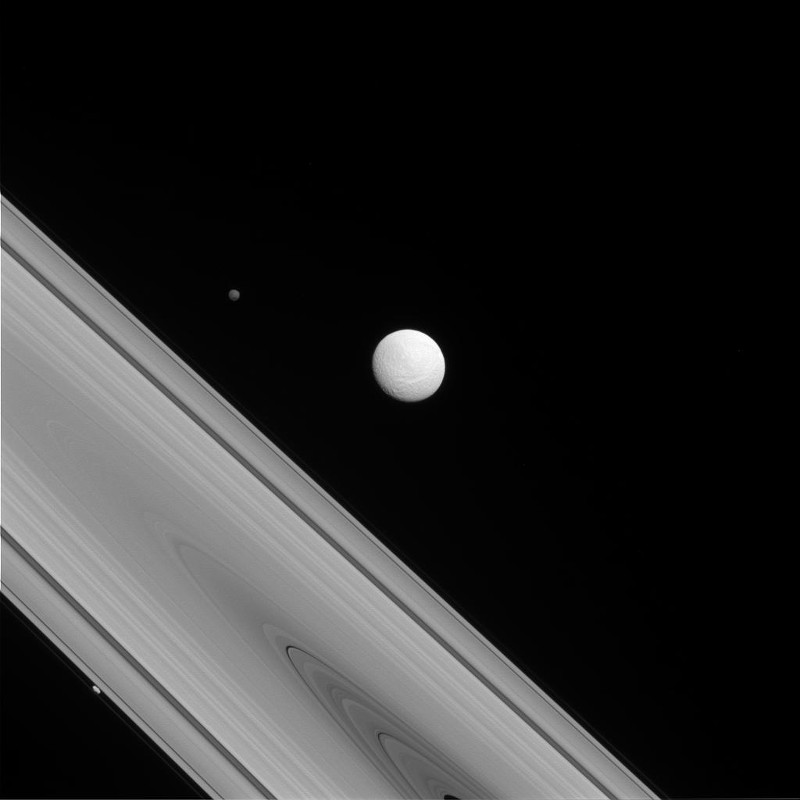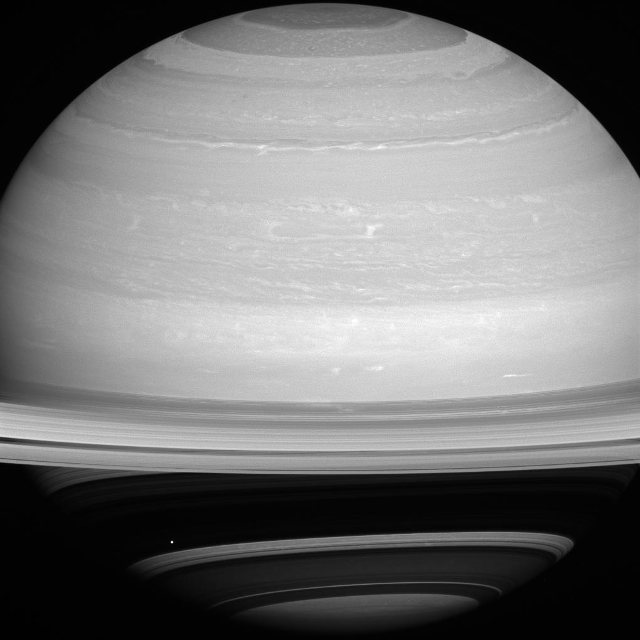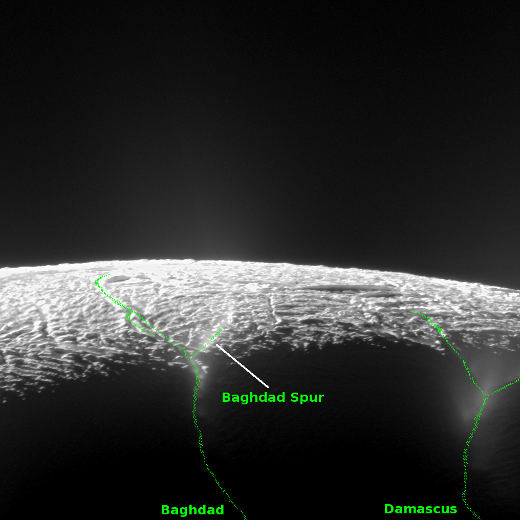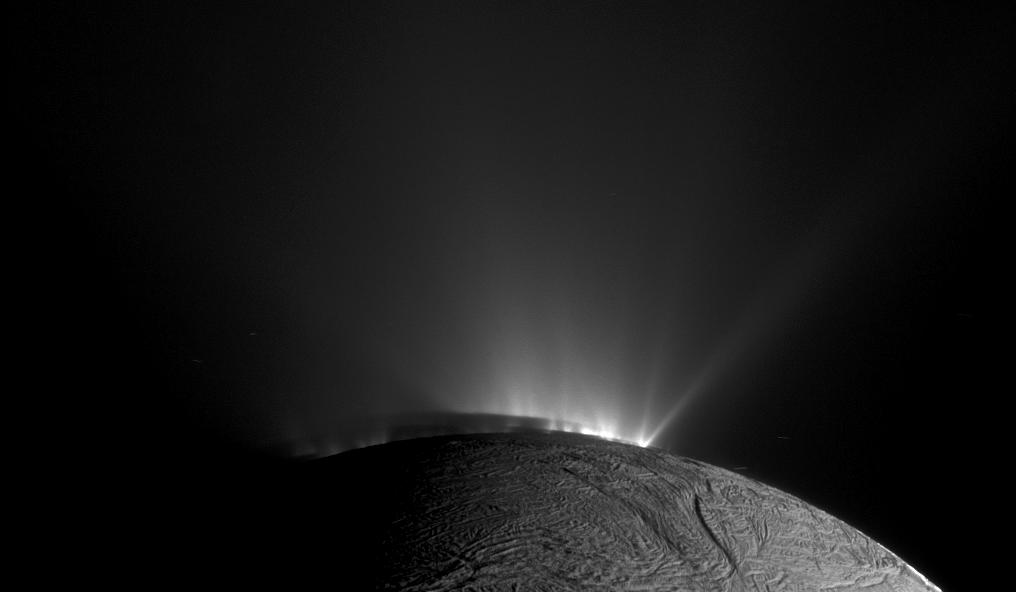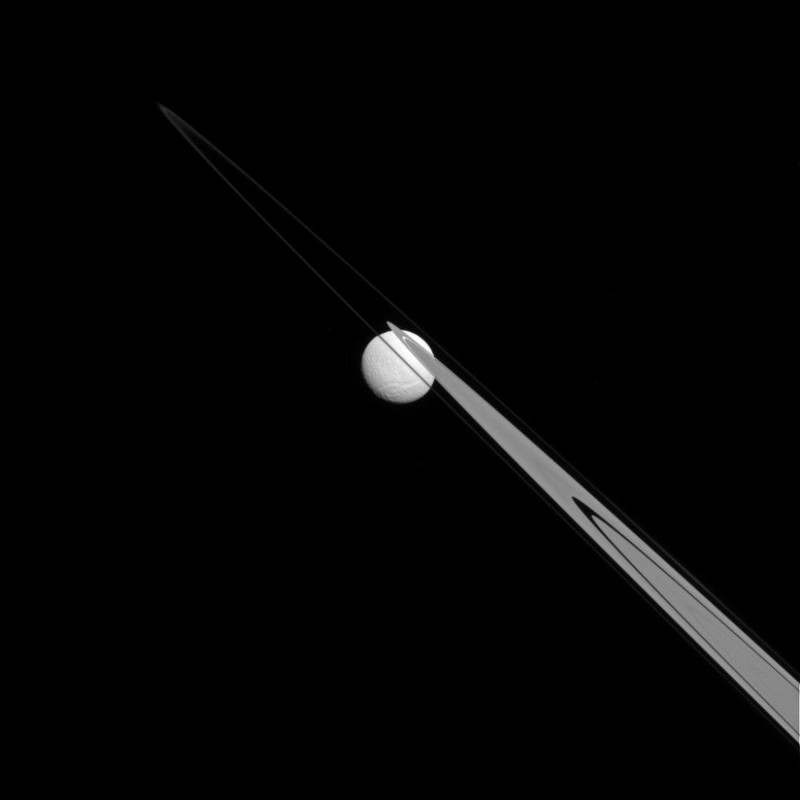
The Cassini orbiter used its narrow angle camera to photograph Saturn’s moon Tethys from this interesting angle, at a distance of 1.8 million kilometers. In this picture the 1,062 kilometer wide icy moon appears to be hanging off of Saturn’s A and F rings. Along with the bright white Saturn-facing hemisphere of Tethys, we also get to see how flat Saturn’s rings really are – supposedly only approximately 10 meters high/thick while being 300,000 kilometers across.
